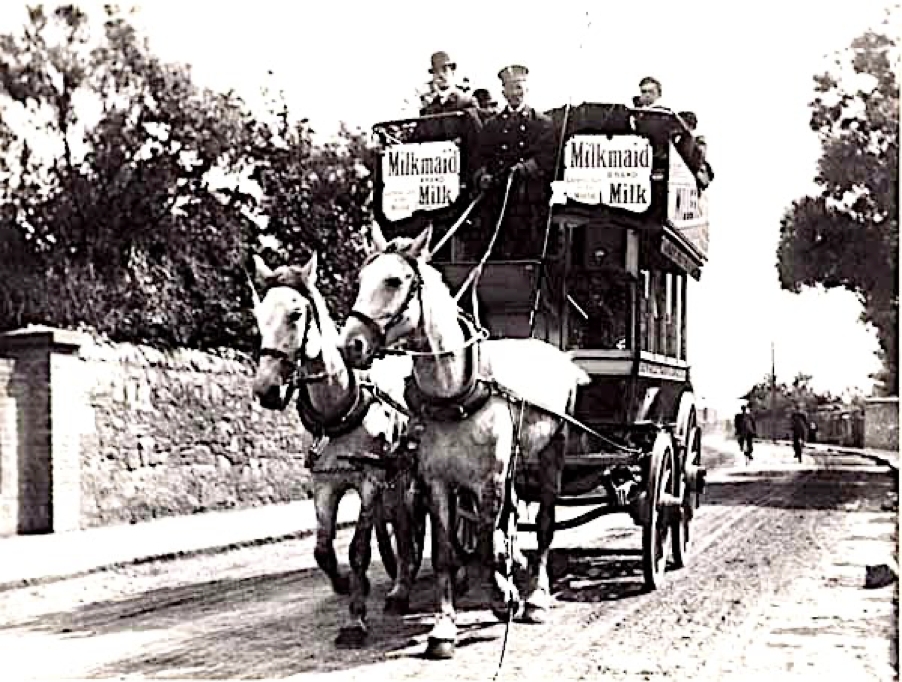What inspired you to write the book ?
I am a retired Art teacher and still live in Harton, where I was born and brought up. My father was born in Ferry Street in South Shields near the River Tyne, he took a great interest in the history of the town.
I followed in his footsteps and joined South Shields Local History Group, where I’m currently vice chair.
Harton Village 1900 was written for two reasons, firstly with the aim of raising money for St Peter’s Church in Harton and secondly to prove that Harton had been a village. Locally we hear quite a lot of other villages such as Westoe Village and Cleadon Village, but little is made of Harton Village.
My mam and dad always called the shops in Harton ‘the Village’ and someone new to the area thought that this phase was just an affectation, so I decided to prove it wasn’t.
I thought I would collect all the lovely, old, rural photos of Harton that I knew existed in the amazing archives at the South Tyneside Libraries and put them into one book.
They show just what Harton Village had been like at the beginning of the twentieth century when my parents were young and were brought on Sunday afternoon walks through the fields from South Shields town centre to enjoy the delights of the bow fronted sweet shop and the little aviary that then existed.
I believed lots of other people would be interested in discovering what the village had looked like and hoped therefore the book would make a profit which I could donate to the church.

I had a copy of the Godfrey Map of Harton from 1895, bought at the museum in Ocean Road, and knew there was a census in 1891, and another in 1901, and since the earliest photographs of the village were from the turn of the century, I decided upon 1900 as a good date to explore just who lived in the village and what happened there.
I’m interested in maps and buildings but also people and their lives. However, unless you lived in a grand house or a pub, the 1891 census does not provide information about where this or that family lived.

A photograph from about 1945, from the South Tyneside Libraries site showing an awning on the left which belonged to the Ship Inn off sales. The pedestrian is walking west along Marsden Road, nearly at the junction with Sunderland Road, by the smithy and the cottage where Jemima had lived, the one with the open door. The smithy and cottages were pulled down in 1964 to provide a car park.
Did you come across any unusual stories when researching?
Amazingly I found a hand drawn map of Harton Village dated 1896 among church documents, naming each family and where they lived. A truly amazing piece of luck.
With this, the census returns and the Godfrey Map I tried to bring the village to life with names and a little information about some of the individuals.
A small example is that of widowed lady, Jemima Brown who in 1900, lived in one of the cottages next to the smithy, to the east of the Ship Inn. She was at that time the oldest inhabitant in the village.
In 1902, when she was 89 the country celebrated the coronation of Edward VII and on Saturday 28th June Harton Village Council organised, as part of their coronation festivities, a drive for the old people of the parish in a horse drawn omnibus where she was given pride of place.
The bus was provided courtesy of the manager of the South Shields Tramways Company, Mr John Wilson, and drove from Harton to Marsden, along the coast to Whitburn, returning through the fields to Cleadon and back to Harton.

What did you use for research ?
Along with the Godfrey Map of 1895, the church warden’s handwritten plan with notes and the census returns, I also had access to some scrapbooks of the period held in the church which contain cuttings from the Shields Gazette and other printed information.
On top of this I was also fortunate to be able to contact the descendants of some of the families I was writing about and obtain family photographs.
The South Tyneside Library history site also provided some superb photographs.
What are you doing now & have you any projects planned for the future ?
I am busy working on a second book in what is to become a series on Harton, this will be called Harton Township 1921.
The idea for this came about during my earlier research as I began to appreciate that Harton was far more than just the village and in fact was a significant area that stretched to the east along the coast from Trow Rocks to Marsden and westward as far as Simonside.
The area in the west, which included Harton Colliery, was taken into South Shields in 1901 but it was not until 1921 that Harton was completely subsumed into The County Borough of South Shields.
This second book will aim to tell the story of Harton Township from medieval times to 1921.
I hope to have the new book ready for November 2021 to fully mark the anniversary of the end of rural Harton and the housing boom that covered the fields of the township.
Link to South Tyneside images: https://southtynesidehistory.co.uk/
Interview by Alikivi April 2021.